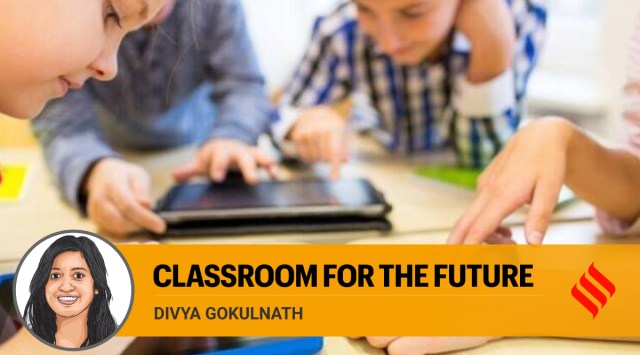
India’s path to economic growth is paved with the promise of its young and vibrant population. As the world’s third-largest economy in terms of purchasing power parity (PPP), the country is on track to reach unprecedented levels of prosperity. A significant contributing factor is our young population, with 43 per cent of Indians aged 25 and younger in 2023, and the majority of the population expected to remain of working age until at least 2100. As the Confederation of Indian Industry (CII) notes in a recent report, if the country’s working-age population is productively employed, India’s GDP can grow from $3 trillion to $9 trillion by 2030 and $40 trillion by 2047.
The key to unlocking this potential lies in education technology, or EdTech. India has already started taking steps towards capitalising on its “demographic dividend” by prioritising the provision of world-class, tech-enabled education to its youth. The “Amrit Kaal”, from now until 2047, is a time to build on our successes and provide a happy life for everyone.
On the journey towards becoming a global power, India’s ancient value systems, which have always emphasised the importance of education, will play a pivotal role in ushering the nation into the Knowledge Age. In this era, every child, regardless of their location or socio-economic background, will have access to quality learning opportunities, shaping a future in which learning is really liberated and knowledge is truly democratised. The next 25 years will be defined by how well we can educate our people, building on the collective sense of purpose, freedom, and growth that has defined the last 75 years.
Democratising technology and unleashing its full potential is the catalyst India needs to not only propel the nation towards its Amrit Kaal goals but also reap their outcomes for decades to come. Digital technology is the foundation of the modern ecosystem. India’s march towards this digital economy with the India Stack (Aadhar, UPI, ONDC) and, more significantly, the National Education Policy (NEP) 2020, is a massive leap in the right direction.
Imagine intelligence-embedded virtual classrooms, multi-disciplinary institutions, simulated field visits, and schools that digitally decode, deliver, and disseminate knowledge to students anywhere in the world. I further hope for a 2047 where investments in tech-driven education will mould students into competent, compassionate, and transformative future leaders, while teachers evolve to nurture global mindsets and guide students on how to think rather than what to think.
However, the path to realising this dream is not easy. Even though access to quality education is a birthright, new UNESCO data shows that one out of four children aged five has never had any form of pre-primary education. This represents 35 million out of 137 million five-year-old children worldwide.
The pandemic further exacerbated challenges to education, widening learning gaps and bringing in a generational learning loss. Data shows that children with disabilities, from migrant families, those living in remote areas, from marginalised communities, and girls in particular experience these inequalities most acutely. It has never been more urgent for humanity to re-calibrate our relationship with technology in order to transform the future and enhance our commitment to equity, inclusion, and democratic participation.
What is truly remarkable about India’s drive towards a transformed education system is the country’s capacity for innovation. One inspiring example is Sapan Patralekh of Jharkhand’s Dhumartar village, who turned the walls of mud houses in the village into blackboards because leaving behind students with fewer means of access to digital learning during the lockdown was just not an option. Shailesh Raval’s famous loudspeaker classes in Gujarat’s Parpada village, along with several other “mohalla” classes utilising the public announcement systems of Panchayat Bhawan in Chhattisgarh and Haryana, are shining examples of India’s thirst for knowledge, innovation, and unrelenting determination to pursue learning.
These powerful voices of change are an inspiration and a call to action, further fuelling my own drive to create inclusive, accessible, and equal learning environments for India’s children. As a teacher myself, I am constantly reminded of the transformative power of education and how it can change lives for the better. By nurturing the talents and potential of every child, we can create a society that is truly prosperous, innovative, and compassionate. Our great country deserves nothing less.
The writer is the co-founder and director of Byju’s. This article is part of an ongoing series, which began on August 15, by women who have made a mark, across sectors